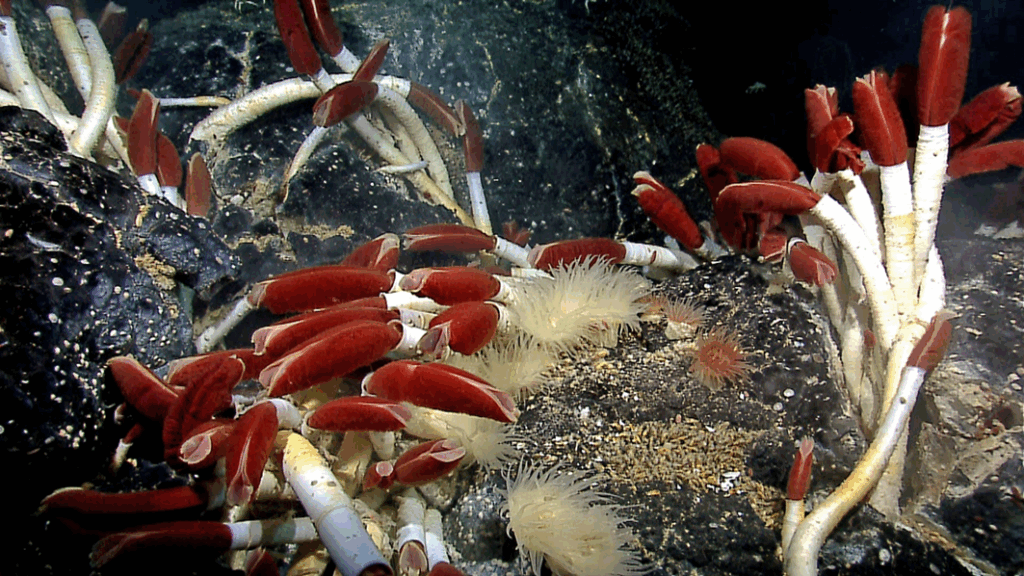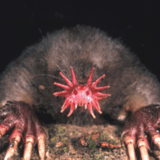No.9: Giant Tube Worm (Riftia pachyptila)

Discovered in 1977 by the submersible Alvin near the Galápagos Rift, these towering, white tubes crowned with vivid red plumes stunned the scientific community. Meet the Giant Tube Worm—a species that thrives where life was once thought impossible: near boiling-hot, toxic hydrothermal vents.
Growing up to 8 feet (2–3 meters) long, these worms have no mouth, stomach, or eyes. Instead, they host symbiotic bacteria inside their bodies, which convert volcanic chemicals into energy—a process called chemosynthesis. Their scarlet plumes extract hydrogen sulfide from the vent water, feeding their internal “chemical factories.”
Clusters of these worms rise like alien forests in the black abyss, a surreal display of blood-red “flowers” blooming in the darkness. Adapted to crushing pressure and lethal toxins, the Giant Tube Worm stands as a symbol of life’s resilience and mystery.
No.8: Atolla Jellyfish (Atolla wyvillei)

Picture a ruby-red jellyfish drifting serenely in the darkness—until danger strikes. Suddenly, it erupts in pulsing rings of blue bioluminescence, an underwater distress signal known as the “burglar alarm” effect. This brilliant display is meant to attract even bigger predators, distracting the attacker and giving the jellyfish a chance to escape.
The Atolla Jellyfish, typically found around 2,600 feet (800 meters) deep, has been observed by remotely operated vehicles glowing like a warning siren in the black void. Most of the time, it floats peacefully, snaring small fish and plankton with its trailing tentacles. But when threatened, it becomes a living flare—a beacon of survival in the eternal night.


